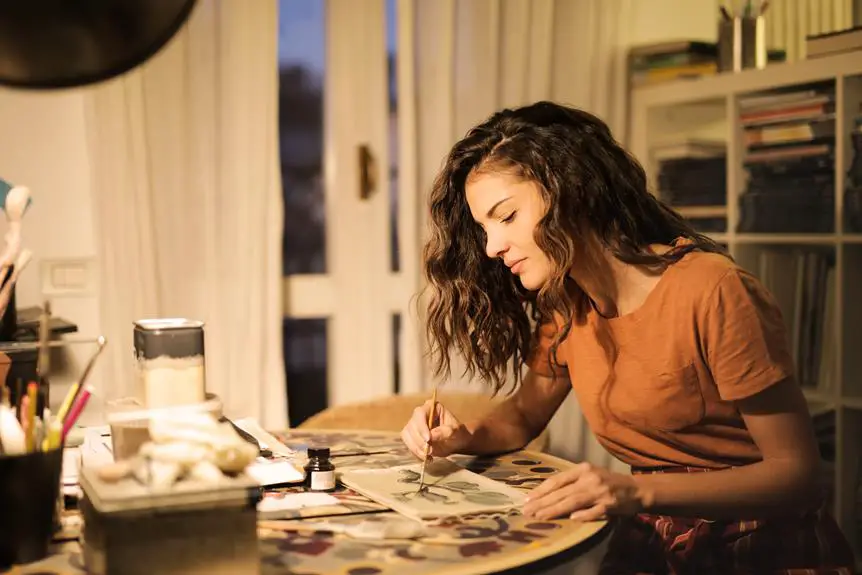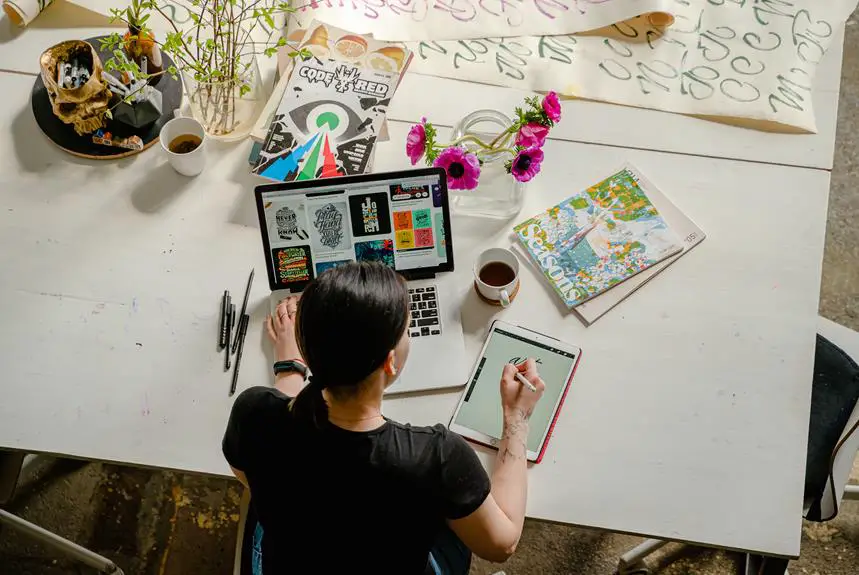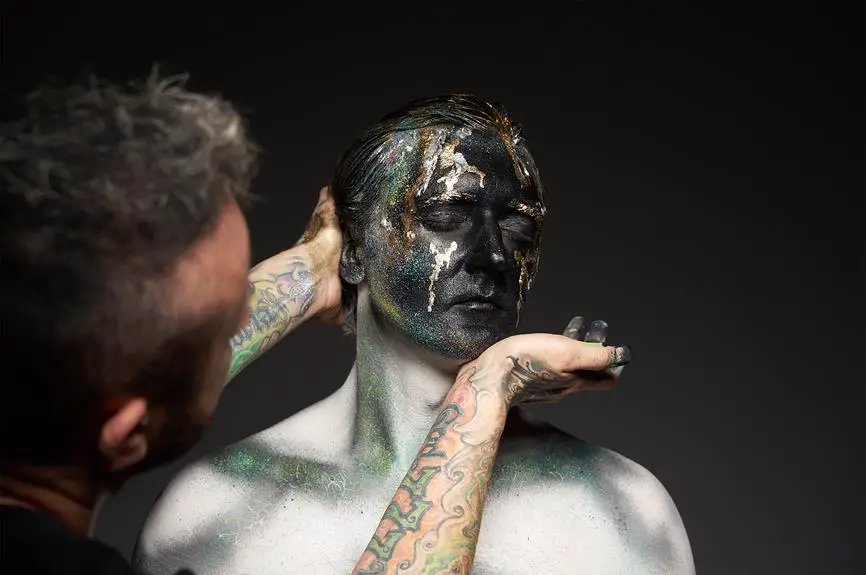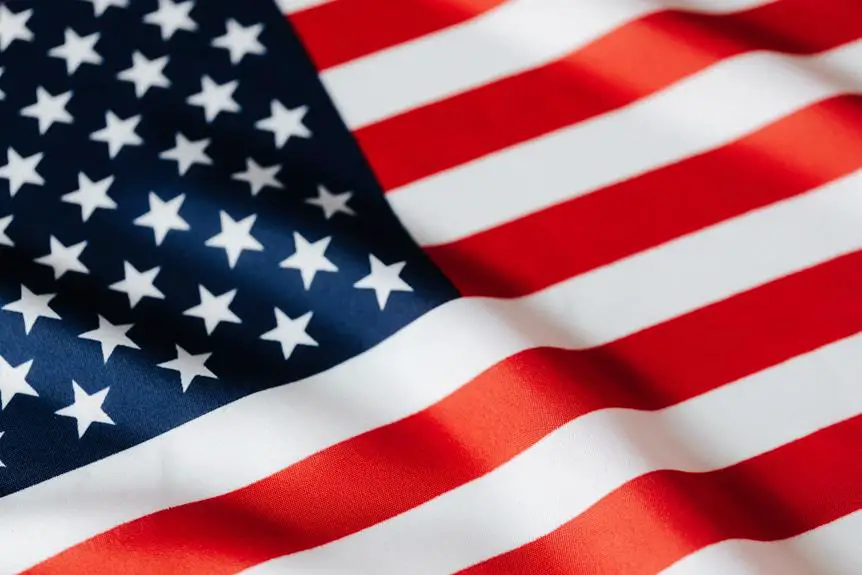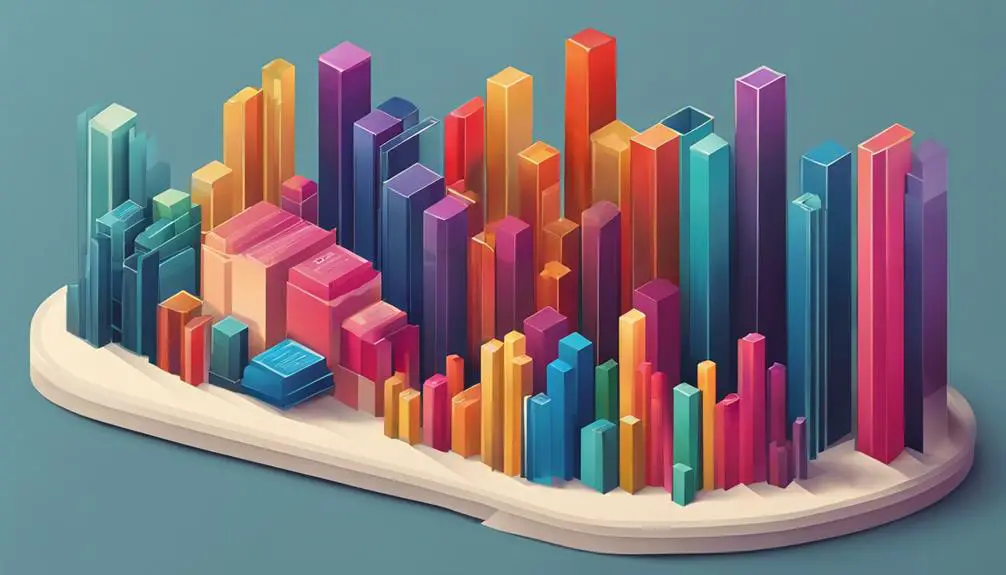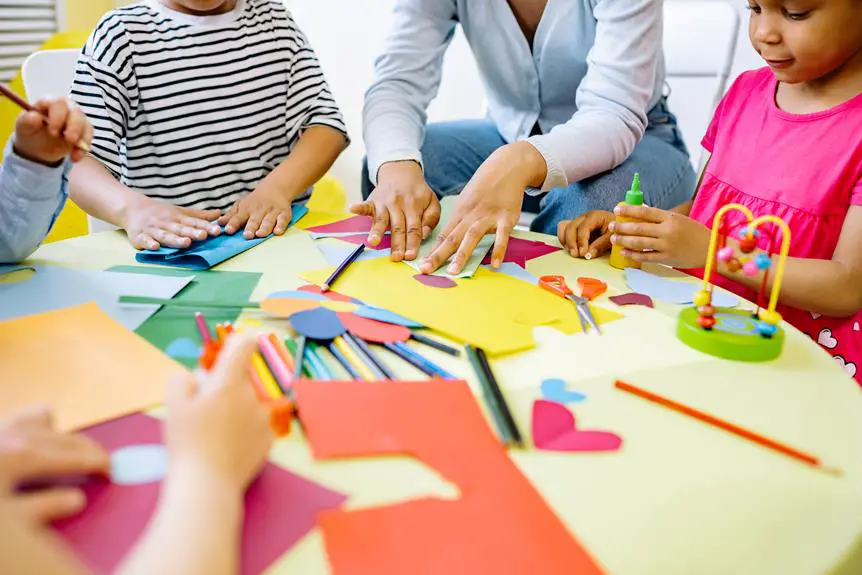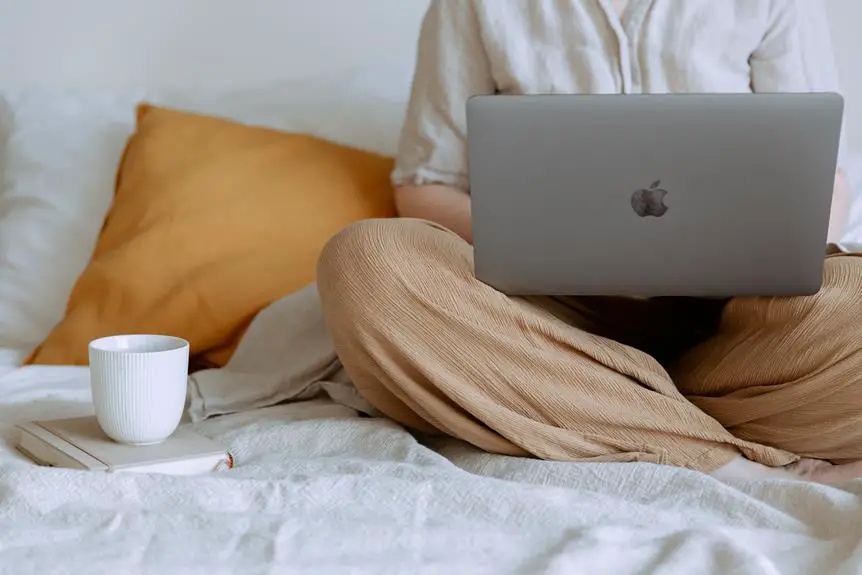Are you considering a career as an independent artist? Brace yourself for a rollercoaster ride of creativity and freedom. As an independent artist, you'll have the power to express yourself authentically and shape your artistic journey. You'll forge your own path, maintaining control over your work.
But beware, challenges like self-promotion and financial stability lie ahead. In this article, we'll explore the pros and cons of being an independent artist, helping you navigate this exhilarating yet uncertain path.
Key Takeaways
- Flexibility in creative expression and control over artistic direction
- Independence and autonomy in pursuing artistic pursuits
- Opportunity for personal growth and freedom to explore
- Direct connection with audience and potential for higher earnings
Flexibility in Creative Expression
You can explore your artistic boundaries and experiment with different styles and techniques, allowing for greater flexibility in your creative expression. As an independent artist, you have the freedom to push the limits of your creativity and try new things without any constraints. Whether it's painting, sculpting, writing, or any other form of art, you have the ability to explore various artistic avenues and find your unique voice.
Being independent means that you don't have to conform to any particular style or technique. You can break away from traditional norms and explore unconventional approaches to art. This freedom allows you to truly express yourself and create art that's true to your vision and individuality.
Furthermore, being an independent artist allows you to adapt and evolve your style as you see fit. You can constantly challenge yourself and grow as an artist by experimenting with different mediums, subject matters, and techniques. This flexibility in creative expression not only keeps your art fresh and exciting but also allows you to continuously learn and develop your skills.
Control Over Artistic Direction
Taking charge of your artistic direction allows for greater autonomy and decision-making power in shaping your creative journey as an independent artist. As an independent artist, you have the freedom to explore different styles, experiment with various techniques, and push the boundaries of your art. You aren't bound by the restrictions imposed by a record label or a management team. Instead, you have the ability to follow your own instincts and create the kind of art that resonates with you the most.
Being in control of your artistic direction also means that you can make decisions regarding the content and themes of your work. You can choose to address topics that are important to you, express your personal experiences, and share your unique perspective with the world. This level of creative freedom allows you to create art that's authentic and true to yourself, connecting with your audience on a deeper level.
Moreover, having control over your artistic direction means that you have the final say in how your work is presented and marketed. You can choose the platforms on which to showcase your art, decide on the visual aesthetics, and design your own album covers or promotional materials. This level of creative control allows you to create a cohesive and consistent artistic brand that reflects your vision and style.
However, with great power comes great responsibility. Taking charge of your artistic direction also means that you bear the full weight of the decisions you make. You're solely responsible for the success or failure of your creative endeavors. This can be both empowering and overwhelming, as it requires you to constantly evaluate and make informed decisions about your art.
Independence and Autonomy
When it comes to independence and autonomy as an independent artist, you can enjoy the advantages of creative freedom, allowing you to fully express your artistic vision without any external constraints.
As your own boss, you have the power to make all the decisions regarding your career, from the type of projects you take on to the marketing strategies you employ.
Additionally, being independent gives you the flexibility to explore various artistic pursuits and delve into different mediums without any restrictions.
Creative Freedom Advantages
Often, being an independent artist allows you to have complete creative freedom and control over your work. This is a significant advantage that many artists strive for, as it allows you to express your unique vision without any external restrictions. Here are some key benefits of having creative freedom as an independent artist:
- Unlimited experimentation: You have the freedom to explore different styles, techniques, and mediums without the pressure of conforming to any specific guidelines or expectations. This allows you to push boundaries and discover your true artistic voice.
- Flexibility in decision-making: As an independent artist, you have the autonomy to make all the decisions regarding your artwork, including its presentation, pricing, and distribution. This level of control ensures that your work remains true to your artistic vision.
- Authenticity and personal expression: Creative freedom enables you to create art that reflects your unique perspective and experiences. You can express your thoughts, emotions, and ideas in a way that resonates with you and connects with your audience on a deeper level.
- Opportunity for growth and self-discovery: With creative freedom, you have the chance to continually evolve and grow as an artist. You can experiment with new techniques, explore different themes, and challenge yourself to reach new artistic heights.
Having complete creative freedom as an independent artist empowers you to create art that's truly your own, fostering a sense of fulfillment and authenticity in your artistic journey.
Self-Directed Decision Making
While you may face challenges along the way, being an independent artist gives you the freedom to make self-directed decisions and have complete autonomy over your artistic career.
This means that you have the power to choose which projects to take on, what creative direction to pursue, and how to manage your time and resources. You aren't bound by the decisions of others or limited by the constraints of a larger entity.
This level of independence allows you to fully express your vision and artistic voice without compromise. Additionally, being in control of your own career gives you the opportunity to explore different paths and experiment with various art forms.
It puts you in the driver's seat, enabling you to shape your artistic journey and take your career in any direction you desire.
Flexibility in Artistic Pursuits
You have the ability to explore a wide range of artistic styles and mediums, giving you the freedom to fully express your creativity and pursue your artistic passions as an independent artist. Here are four reasons why flexibility in artistic pursuits is a major advantage:
- Unrestricted Creativity: As an independent artist, you aren't bound by the limitations or expectations of a specific style or medium. You can constantly experiment and push the boundaries of your art, allowing your creativity to soar.
- Personal Expression: Being independent means you have the autonomy to create art that reflects your unique perspective and experiences. You can delve into topics and themes that are meaningful to you, giving your work a personal touch.
- Adaptability: The freedom to explore different styles and mediums allows you to adapt to changing trends and audience preferences. You can stay relevant and continue to grow as an artist by embracing new techniques and artistic approaches.
- Diverse Portfolio: By exploring various artistic styles and mediums, you can develop a diverse portfolio that showcases your versatility and range as an artist. This can open up more opportunities for collaborations, exhibitions, and commissions.
Opportunity for Personal Growth
As an independent artist, you have the opportunity for personal growth through self-discovery.
Through your creativity, you can explore different aspects of yourself and uncover hidden talents.
The freedom to experiment and take on new challenges allows you to embrace growth and push yourself to new heights.
Self-Discovery Through Creativity
Through embracing your creativity, you can delve into a world of self-discovery and personal growth. Here are four ways in which creativity can provide you with opportunities for self-discovery and personal growth:
- Exploring your emotions: When you engage in creative activities, such as painting, writing, or playing an instrument, you have the chance to express and understand your emotions on a deeper level. This can lead to self-discovery by uncovering hidden feelings and thoughts.
- Building self-confidence: Creating something from scratch and seeing it come to life can boost your self-confidence. Whether it's a song, a painting, or a piece of writing, the act of creating allows you to recognize your own abilities and believe in yourself.
- Discovering new perspectives: Creativity encourages you to think outside the box and explore different perspectives. By challenging your own beliefs and assumptions, you can gain a broader understanding of the world and yourself.
- Finding your voice: Through creative expression, you have the opportunity to find your unique voice and share it with the world. Discovering your authentic self and expressing it through your art can be a transformative journey of self-discovery and personal growth.
Freedom to Explore
An independent artist has the freedom to explore their creativity, allowing for personal growth and self-discovery. As an independent artist, you have the liberty to experiment with different mediums, techniques, and styles without any constraints or limitations.
This freedom allows you to push your boundaries, challenge yourself, and discover new aspects of your artistic abilities. By exploring different avenues, you can uncover hidden talents and develop new skills, leading to personal growth.
The opportunity to delve into various artistic expressions also enables you to find your unique artistic voice and establish your own signature style. Through this exploration, you gain a deeper understanding of yourself as an artist and continue to evolve and grow both creatively and personally.
Embrace this freedom to explore, and watch as your artistic journey unfolds with endless possibilities.
Embracing Challenges for Growth
Take on challenges head-on and embrace them as opportunities for personal growth as an independent artist. As an artist, you have the power to turn challenges into stepping stones for success. Here are four reasons why embracing challenges can lead to tremendous growth:
- Expanding your skills: Facing challenges forces you to think outside the box and find innovative solutions. This pushes you to learn new techniques, experiment with different mediums, and expand your artistic abilities.
- Building resilience: Overcoming challenges builds resilience, which is essential for navigating the ups and downs of the artistic journey. It strengthens your ability to bounce back from setbacks and keeps you motivated to keep pushing forward.
- Gaining confidence: Successfully navigating challenges boosts your confidence as an artist. Each obstacle you overcome reinforces your belief in your abilities and gives you the confidence to take on even bigger and bolder projects.
- Discovering your true potential: Embracing challenges uncovers hidden talents and strengths that you may not have known existed. It pushes you to explore new horizons, tap into your creativity, and discover the true extent of your artistic potential.
Direct Connection With Audience
Do you ever wonder how you can establish a direct connection with your audience as an independent artist? Well, the good news is that being an independent artist allows you to have complete control over your connection with your audience. Unlike artists signed to a label or managed by a team, you have the freedom to engage with your fans on a personal level.
Social media platforms like Instagram, Twitter, and YouTube have made it easier than ever to connect directly with your audience. You can share updates, behind-the-scenes content, and even interact with your fans through comments and direct messages. This direct line of communication allows you to build a loyal fan base and create a sense of community around your work.
Additionally, as an independent artist, you have the opportunity to perform live shows and connect with your audience in person. Whether it's small intimate gigs or larger concerts, these performances allow you to showcase your talent and connect with your fans on a deeper level. The energy and connection felt during live performances can be incredibly powerful and can leave a lasting impression on both you and your audience.
Potential for Higher Earnings
By making your own decisions and taking control of your career, you can maximize your potential for higher earnings as an independent artist. Here are four ways in which being an independent artist can lead to increased financial success:
- Direct Revenue from Your Art: As an independent artist, you have the power to set your own prices and keep a larger portion of the revenue generated from your art. Unlike artists signed to labels or galleries, you don't have to split your earnings with middlemen, allowing you to earn more for your hard work.
- Diverse Income Streams: Being independent opens up opportunities for multiple income streams. Alongside selling your art, you can explore other avenues such as merchandise sales, licensing deals, commissions, and collaborations. This diversification can help boost your earnings and provide a more stable financial foundation.
- Access to Global Markets: The internet has revolutionized the way artists reach their audience. As an independent artist, you have the ability to market and sell your work globally, reaching a larger and more diverse audience. This increased exposure can lead to higher sales and greater earning potential.
- Freedom to Negotiate: When you're your own boss, you have the freedom to negotiate better deals for yourself. Whether it's negotiating higher commission rates or securing more favorable licensing agreements, being independent gives you the power to advocate for your own financial interests.
Challenges of Self-Promotion and Financial Stability
To achieve financial stability as an independent artist, you must overcome the challenges of self-promotion and find effective ways to market your work. One of the main challenges you'll face is self-promotion. As an independent artist, you're solely responsible for getting your work out there and reaching potential customers or clients. This can be a daunting task, as it requires you to actively promote yourself and your work in a crowded marketplace. You may struggle with self-confidence or find it difficult to effectively communicate the value of your art to others.
Another challenge you may encounter is the lack of financial stability. Unlike traditional employment, where you receive a regular paycheck, being an independent artist means that your income can be unpredictable. You may experience periods of feast and famine, where you have plenty of work and money coming in, followed by periods of drought where you struggle to make ends meet. This uncertainty can be stressful and make it difficult to plan for the future.
In order to overcome these challenges, it's important to develop a strong self-promotion strategy. This may include building a website or online portfolio to showcase your work, utilizing social media platforms to reach a wider audience, and networking with other artists and industry professionals. Additionally, finding alternative revenue streams, such as teaching art classes or offering commissions, can help provide a more stable income. It's also important to set realistic financial goals and create a budget to ensure that you're able to cover your expenses and save for the future.
While self-promotion and financial stability can be challenging for independent artists, with perseverance, creativity, and strategic planning, it's possible to overcome these obstacles and thrive in your artistic career.
Frequently Asked Questions
How Can Being an Independent Artist Affect My Mental Health and Overall Well-Being?
Being an independent artist can greatly impact your mental health and overall well-being. The pressures of managing everything yourself can be overwhelming, but the freedom to express yourself and pursue your passion can also be incredibly fulfilling.
Are There Any Legal Considerations or Obligations That Independent Artists Should Be Aware Of?
Are there any legal considerations or obligations you should be aware of as an independent artist? It's important to understand copyright laws, contracts, and tax requirements to protect yourself and your work.
What Are Some Common Misconceptions or Myths About Being an Independent Artist?
Some common misconceptions or myths about being an independent artist include thinking you have total creative freedom and not needing to worry about business aspects. However, you still face challenges and responsibilities in both areas.
How Can Independent Artists Find and Collaborate With Other Artists or Professionals in the Industry?
To find and collaborate with other artists or professionals in the industry, you can attend networking events, join online communities, or reach out directly through social media. Building relationships and fostering connections is key.
What Are Some Strategies or Tips for Managing the Financial Aspects of Being an Independent Artist, Such as Budgeting and Tax Obligations?
To manage the financial aspects of being an independent artist, start by creating a budget and tracking your expenses. Make sure to set aside money for taxes and consider working with a professional accountant to navigate tax obligations.

